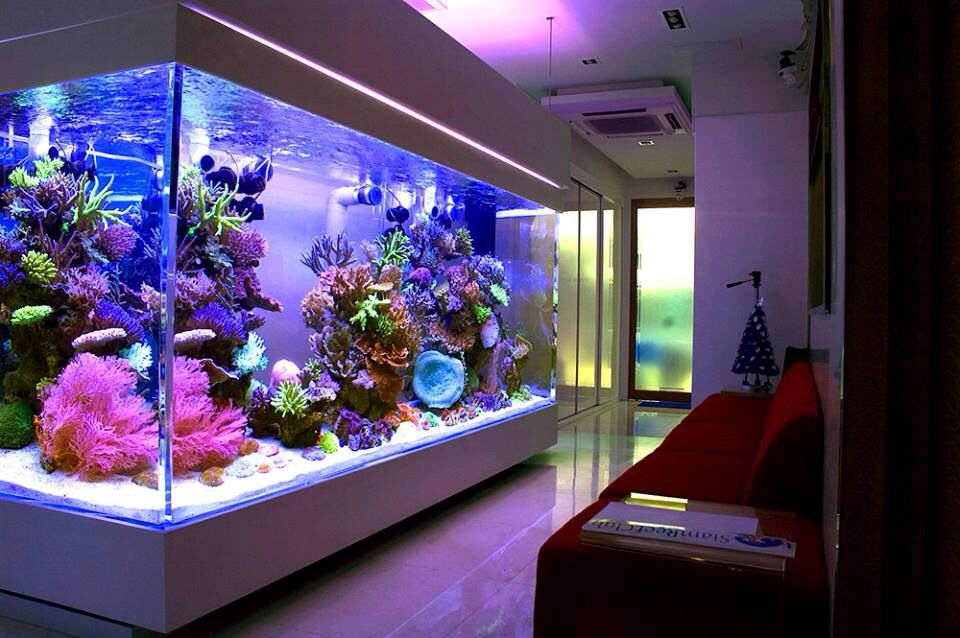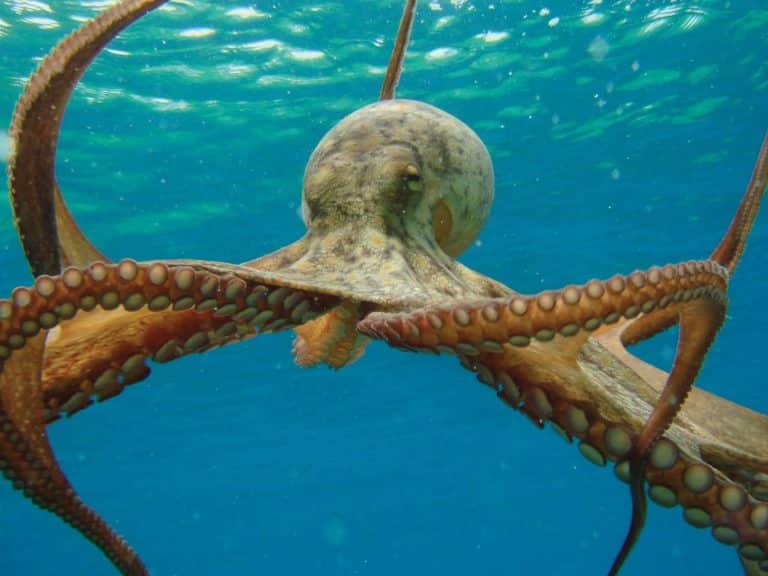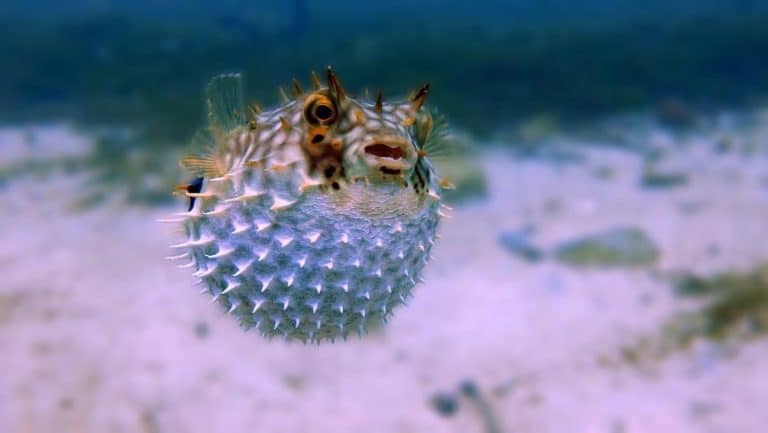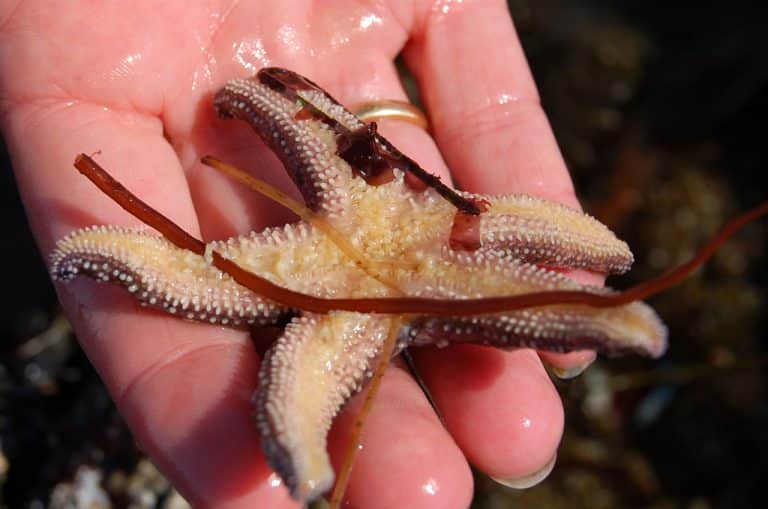Common Causes: What Causes High pH in Aquarium
pH is a term that denotes the basicity or alkalinity of water. It is one of the most essential elements to consider when creating a suitable environment for aquatic life. While aquarists try their best to maintain the pH levels, there are many challenges even experienced aquarium enthusiasts need to encounter. The pH levels affect the well-being and behavior of your fish and aquatic plants.
It would be best to keep a constant eye on your aquarium and its pH levels. In this blog, you will find out what causes high pH, how to lower it, and how it can affect the aquarium water. There is more to just changing the water now and then.
Taking care of the small things will help you have a thriving aquatic ecosystem inside your aquarium.
What is pH in Aquariums?
Aquarium pH means the level of alkalinity or acidity in your tank. pH refers to the potential for hydrogen’. The pH scale ranges from 1 to 14, where the numbers below 7 are acidic, and the ones above 7 are alkaline. If the pH comes to 7, it means neutral; that is, the water is neither acidic nor alkaline.
Also, remember that each number is responsible for changing the result by a factor of 10. For example, if your fish should stay at a pH level of 8, but it is at 9, it means the water is 10 times more alkaline than it should have been. In the same way, if the pH is 11, it means the water is 1000 times more alkaline than it should be. Thus, even the slightest change in the pH levels can be fatal for your fish and aquatic plants in the aquarium.
What is the “Ideal” pH for Freshwater Aquariums?
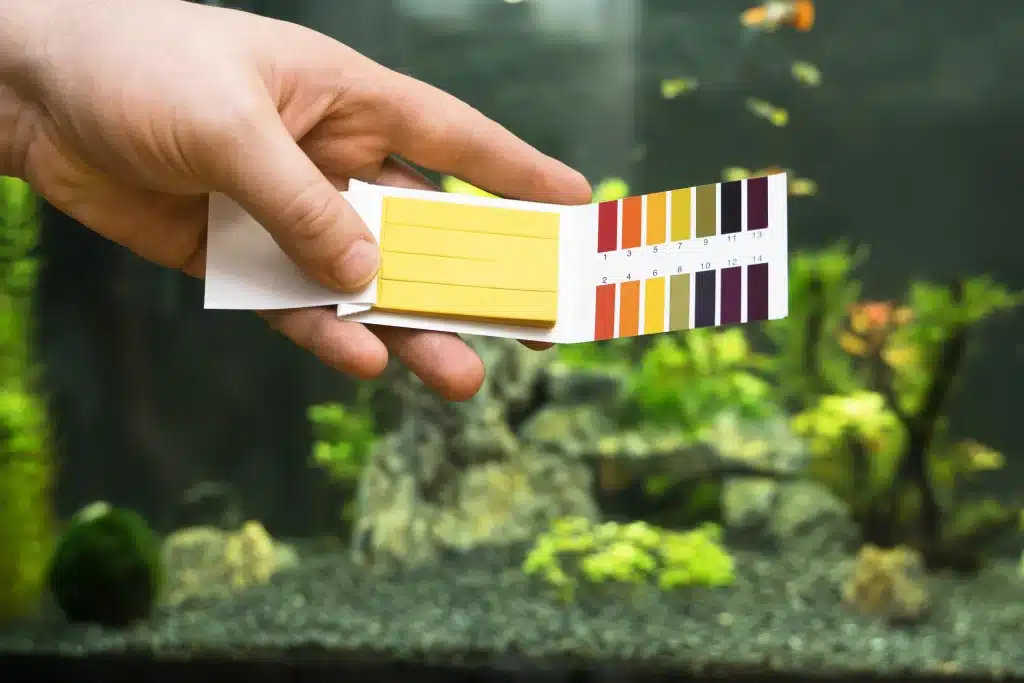
Your freshwater aquarium must have the ‘ideal’ pH at all times. The pH range of 6.8 to 7.8 is the right one for freshwater aquariums. It is seen that fish do well and stay healthy between these pH levels. Thus, before you put your pet fish in the freshwater aquarium, don’t forget to check the pH levels.
Guppy fish, neon tetras, goldfish, rainbow fish, and dwarf gourami do well and need this pH water level at all times.
Why Does the pH of Aquariums Matter?
The pH levels of an aquarium highly matter for the well-being of the fishes, invertebrates, and plants. They come from environments where the temperature, pressure, and all other conditions remain specific. They need a stable environment to stay in, which won’t be possible if there are sudden changes in pH. Sudden or drastic changes can harm, injure, or even kill the fish in your aquarium.
Checking for pH levels when cycling a new aquarium is equally important. Ammonia can build up when there are no nitrifying bacteria to process it. While ammonium ion is not harmful, the free ammonia can be dangerous for the fishes.
Aquarium Fishes and pH levels
Every species of fish needs a specific environment to thrive. While some have high pH levels to stay alive, some prefer low pH. Given below are some names and the pH levels they thrive in.
1. Fishes that Can Live in High pH Water of Aquariums
- Congo tetra prefers pH levels of 6 to 8
- Odessa Barb prefers pH levels of 6 to 7
- Golden Wonder Killifish prefers a pH of 6 to 7.5
- Turquoise Rainbowfish prefer a pH of 4.5 to 7.5
2. Fishes that Die in High pH Water of Aquariums
- Goldfish
- African cichlids
- Rainbow fish
- Central American cichlids
How Often Should You Check the pH of Your Aquarium?
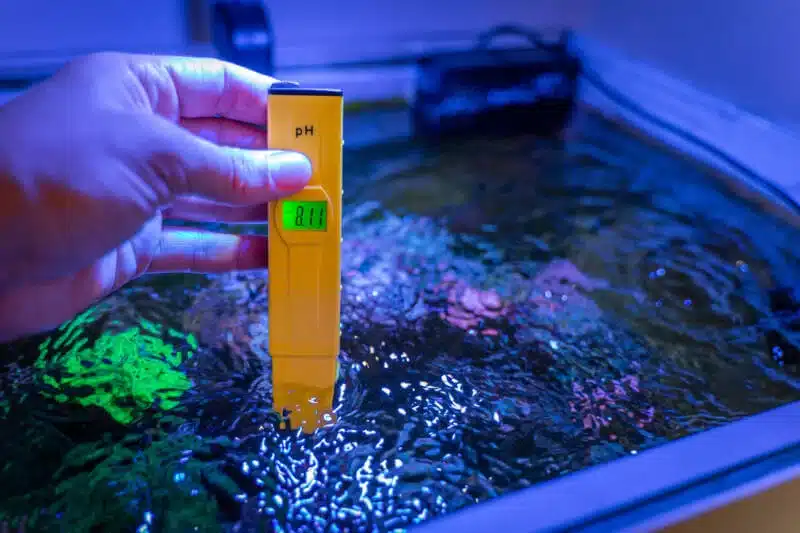
The frequency of checking the pH levels of your aquarium depends upon many factors and the environment you have created for your fish. Look at some instances when checking the pH is possible and important –
- When you are cycling a new tank, you should surely check the pH levels.
- Another instance can be when you are trying to change the pH level of your tank. Keep checking the pH scale until it reaches the desired result.
- Introducing new objects to the tank calls for regular checking of the pH levels.
- When making your fish breed, it will need a specific pH water. So, keep testing the pH levels from time to time.
Common Causes of High pH in Aquariums
Understanding the causes of high pH in the aquarium’s water is essential for the well-being of the fish and the plants. Check out what causes high pH in aquariums:
- There are constant biological activities taking place in the aquarium, like the breakdown of organic matter. This process can raise the pH levels.
- You might be pouring in water from the tap or source water, which is naturally high in pH. This can escalate the pH levels inside the tank.
- You might have placed some decorations or substrates made up of limestone or crushed coral, which can raise the pH levels over some time.
- When the carbonate hardness or KH gets high, pH lowering becomes impossible.
- When you have too many fish and the filtration isn’t enough, it can spike the pH levels in the aquarium.
- The addition of fish food can cause an increase in the alkalinity of the aquarium water.
- When the aquarium plants die, the carbon dioxide levels can decrease, thus increasing the pH levels.
Dangers of High pH in Aquariums
Remember that both high and low pH can be harmful to the plants and fish living in the aquarium. Following are some dangers that high pH can cause to the lives in the aquarium.
1. Ammonia Toxicity
Ammonia is already produced by fish waste, but when the pH value goes up, there is production of ammonium ions. This can lead to illness and even death of your fish in the aquarium.
2. Reduction in Nutrient Availability
When the pH value increases, the important nutrients like iron and other micronutrients become less, and thus, the plants must suffer. Your plant growth will be hindered badly.
3. Precipitation of Minerals
You will find precipitates forming in the water due to high pH levels. This will affect the cleanliness of your tank.
4. Increase in Algae Growth
An increase in pH levels helps in the growth of algae. These algae draw all the nutrition and light, thus hindering the growth of your aquatic plants.
5. Health Issues of The Fishes
While many fishes can thrive in high pH levels, some fishes do not prefer the same. This difference in tank water’s pH and its requirement can lead to stress and illness in your fish.
Recommended Techniques for Lowering pH in Aquariums
Often, you might be stuck with a question – ‘how do I lower my pH in my aquarium’? An increase in pH levels can be alarming for the aquatic life in your aquarium. But the best thing is that there are various ways to lower the pH levels.
You can use chemical as well as natural ways of lowering pH levels. Some techniques are listed below:
- You can add 1 to 2 pieces of driftwood in your aquarium. This will help as a natural filter for the tank. However, refrain from using manufactured driftwoods as they can contain chemicals.
- Another alternative is using natural peat moss. Place the peat moss in a filter bag and then place it inside. This way, the moss won’t be floating.
- Another natural substance you can use is natural almond leaves. They will help you lower the pH of your aquarium’s water
- Use a carbon dioxide reactor or diffuser in your aquarium, which releases CO2 and helps in lowering the pH value.
- A reverse osmosis filter helps in removing any types of impurities that make the water turn alkaline.
- Another method you can use is adding tannins, which helps in reducing the alkalinity of the water. However, the changes seen through this process are slow and minimal.
Easy Ways to Check if Your Aquarium Water is High in pH
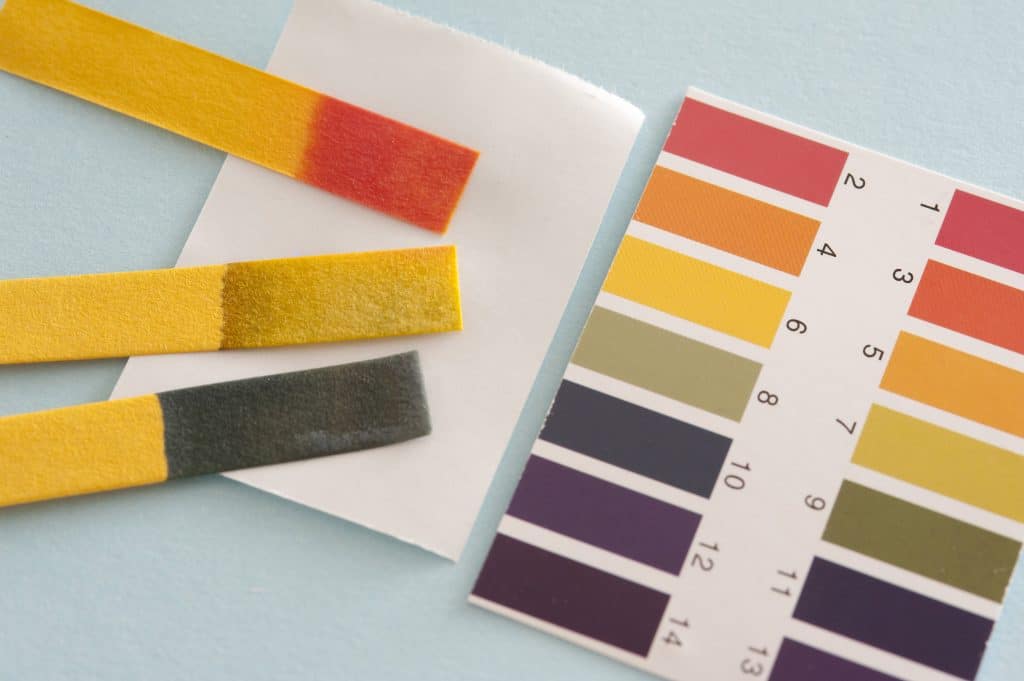
To get the right reading for your aquarium’s pH value, you will need to get a good tool. While a dead fish in the aquarium is enough of an advanced symptom of unstable pH levels, there are 2 more ways in which you can do so.
1. Aquarium Test Kit
This is another way you can test the pH of your aquarium water. Take a test tube and add some drops of the tank water as a sample. Now, add a few drops of the testing solution, and there will be a color change.
2. pH Test Paper
This is commonly known as the test strips, or the litmus paper changes color depending on how acidic or alkaline the solution is. You must tear off a strip, put it in your aquarium water, and wait for it to dry. You will see that there is a change in the color of the strip. Using the chart given on the box, you can match and learn about the pH.
Tools to Monitor the pH in Your Aquarium
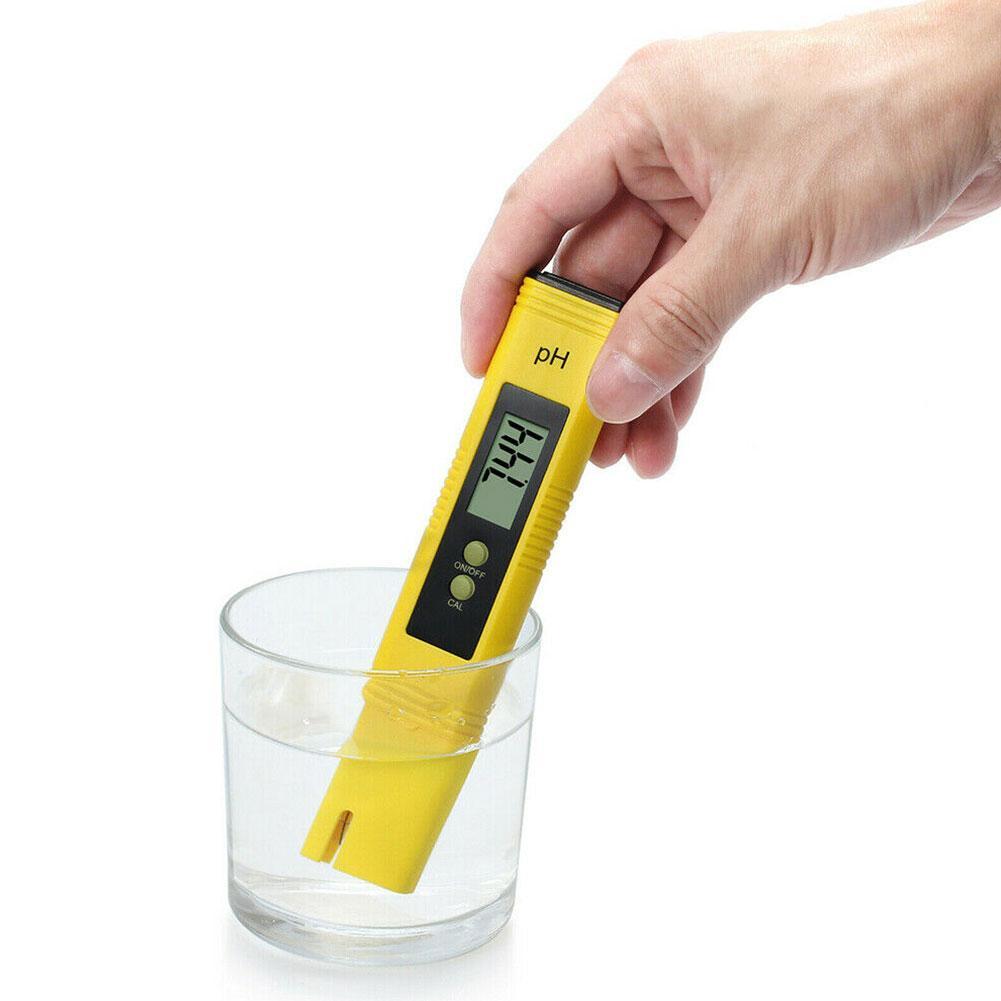
Getting the right tool to monitor the pH of your aquarium is essential; there are many of them available. Let’s find out about some of them in details below:
1. Bluelab Combo Meter for pH
This meter helps in measuring pH, temperature, and even conductivity. This device is proven to give accurate results. The best thing is that it offers warnings when the pH is out of range, and the battery runs low.
However, you must be careful when working with the meter, as it can break easily. While it gives accurate readings, it has the drawback of being complex. It comes with a 5-year limited warranty, with only waterproof probes. The presence of a dual probe is what makes it so accurate.
2. Hayi Digital pH Meter for Aquarium Water
This tool has an automatic calibration function and buffering powder for future use. It is pre-calibrated when it arrives so it can be used daily. Also, it has another feature of automatic temperature calibration.
However, it is not waterproof and durable. It grows inaccurate over some time. The non-slip grip of this tool is the best thing about it. You get in a carrying case, which makes storing the tool easier and simpler.
3. Vivosun pH and TDS Meter Combo
Vivosun pH meter is a portable digital thermometer that is already being calibrated. Make sure you are not using it in saltwater aquariums. You will have to calibrate it once a year and show one number at a time, which makes it a bit inconvenient. The battery lasts for 500 hours, which makes it a gem of a tool. This small and lightweight tool is not waterproof. It also shows the water temperature.
4. Bluelab pH Pen
This fully waterproof device has high-quality glass proof that detects the pH levels and calibrates it easily. When using it in dim environments, you can switch on the LED light. It can function in temperatures ranging from 32 degrees to 122 degrees.
However, it is challenging for beginners to calibrate it. You will have to buy a cleaning solution separately for the tool. The best thing is that there is a feature of auto shutdown, which prevents battery wastage. In addition, there are calibration reminders from the pen, making it super convenient for users.
5. Apera instruments AI209 Value Series
The Apera instrument is a great option for measuring pH levels. The battery lasts up to 2000 hours when used with four batteries. You get a cleaning brush and a care kit for your tool. Be careful since air bubbles might get trapped in the glass probe at times.
It takes longer to show the results of pH. It has two calibration solutions and a heavy-duty case to help you carry it when traveling. It has a big LED display, making it easier for you to get the readings. It shows small icons of temperature, pH, and other features.
6. Pancellent Water Quality Test Meter
This is a small, affordable, and portable tool to measure the pH levels of your tank water. However, it is not waterproof, making it a bit of a trouble. It can work in temperatures ranging from 32 degrees to 140 degrees.
You also get buffer solution packets with this device. The reviews say that the user manual is difficult to read and comprehend. It helps you test pH, conductivity, and TDS. It comes with an LED display that has a backlight that shows all the readings.
Conclusion
Maintaining the pH levels of your aquarium and lowering it from time to time is an enormous work. But knowing how to do it and monitoring the water correctly can help you go a long way as an aquarist. Understanding the root cause is the first step in eliminating high pH.
You must incorporate certain practices to help your plants and fish thrive. You need first to find out the exact issue that is causing the high pH in the water of your aquarium. After that, all you need to do is follow the abovementioned solutions and wait for the results. There are several pH tools you can choose from depending on your needs and preferences.
Frequently Asked Questions
How Do I Prevent pH Spikes in My Aquarium?
To prevent any pH spikes, you must change the regular water change schedule and ensure that the new water’s pH is the same as the existing water in the aquarium.
My Tap Water is High in pH; What Should I Do?
If your tap water is high in pH, you will need to dilute it with distilled RO water and reduce the pH. You can even use a water conditioner to stabilize the pH accordingly.

